01/08/24
Western Governors outline legislative priorities in 2024 State of the State addresses

Several Western Governors are delivering State of the State addresses in 2024. Below is a roundup of the speeches delivered so far; the word cloud above represents common issues included in the addresses.
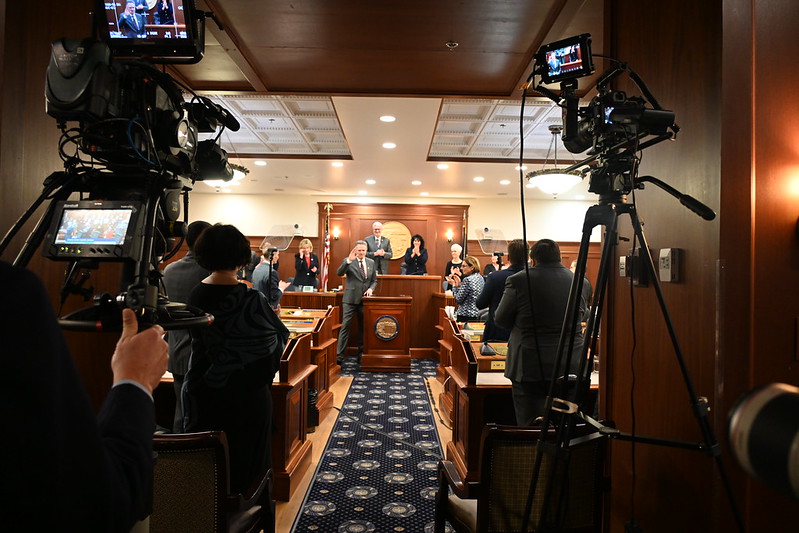 Alaska Governor Mike Dunleavy delivered his sixth State of the State Address this week, during which he outlined legislative priorities related to public safety, education reform, and reducing the state’s rising cost of living.
Alaska Governor Mike Dunleavy delivered his sixth State of the State Address this week, during which he outlined legislative priorities related to public safety, education reform, and reducing the state’s rising cost of living.
In terms of public safety, Governor Dunleavy proposed additional funds to hire another 10 Village Public Safety Officers, and four more investigators for the Missing and Murdered Indigenous Persons Unit.
He also emphasized the significance of investing in teachers and encouraged the legislature to pass The Teacher Retention and Recruitment Incentive Bill, which would offer monetary incentives to teachers based on location and tenure.
In order to reduce the cost of living, Governor Dunleavy proposed eliminating electrical tariffs on the Railbelt system and introduced legislation to improve the economics of Cook Inlet natural gas and advance the Alaska LNG Project to “deliver low-cost energy to Alaskans.”
He also proposed a new mortgage down payment assistance program, that he said, “will be able to help 1,100 to 1,300 families purchase their first home,” and discussed efforts to lower the price of these first homes by reducing the cost of materials.
Finally, Governor Dunleavy discussed efforts to bolster agricultural production via the CROP Act, which would increase access to capital through the Agriculture Revolving Loan Fund, provide premium support for crop insurance, and repeal institutional purchasing limits on Alaskan grown products for the next five years.
Read a full transcript of Governor Dunleavy's 2024 State of the State address here.
In her second State of the State address,Arizona Governor Katie Hobbs emphasized the importance of bipartisan cooperation during this year’s session as the legislature looks to tackle complicated issues related to housing affordability, water resources, and education.
She proposed the creation of the Arizona Is Home Mortgage Assistance Program, which will help working-class families throughout the state with down payment assistance, mortgage interest rate relief, and by providing access to less costly home loans for working-class households in rural areas.
She also spoke about the need to protect the state’s water resources by closing the loopholes that allow build-to-rent and wildcat developments and updating the state’s groundwater management laws. To this end she proposed the Alternative Designation of Water Resources program, which would provide an opportunity for groundwater users to achieve a one-hundred-year assured water supply by contributing new water sources and reducing groundwater pumping.
Building upon the AZ Healthy Tomorrow program, which Governor Hobbs helped launch in 2023, she also called on this year’s legislature to support a new engineering-focused medical school at Arizona State University; to double the size of University of Arizona medical schools; and to start a new medical school focused on serving rural and tribal communities at Northern Arizona University.
As the state’s budget outlook improves due to a nation-leading $32 billion in foreign investment in 2023, Governor Hobbs said the state should also fund additional scholarship programs for students from low-income households and provide students the opportunity to earn college credits while still in high school.
Read the full transcript of Governor Hobss’ State of the State address here.
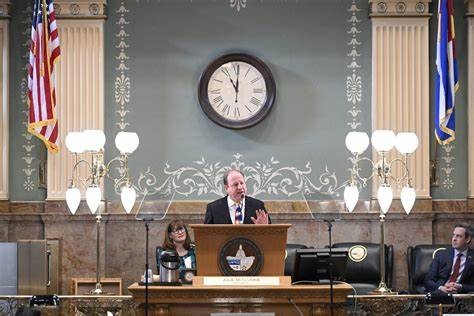 Colorado Governor Jared Polis spent roughly a third of his State of the State Address speaking about housing and transportation.
Colorado Governor Jared Polis spent roughly a third of his State of the State Address speaking about housing and transportation.
As for housing, Governor Polis unveiled a second attempt at land-use reforms, and incentives to develop transit oriented and connected communities.
Of course, in order to develop these transit-oriented neighborhoods, he said the state must improve its transit system, and especially the state’s commercial rail service.
To do so, he said the state should leverage the $6 billion dollars the federal government has approved to improve rail lines throughout the country to fund the Front Range Passenger Rail plan and deliver on the FASTtracks promise. These efforts, he said, must also be combined with a more expensive, statewide bus system.
Aside from housing and transportation, he also spoke about the need to increase investments and build upon the success of programs that the legislature created in recent years, including the state’s Agricultural Workforce Development Program, Opportunity Now, I Matter, and the Colorado Water Plan, just to name a few.
Read the full transcript of Governor Polis’ 2024 State of the State Adress here.
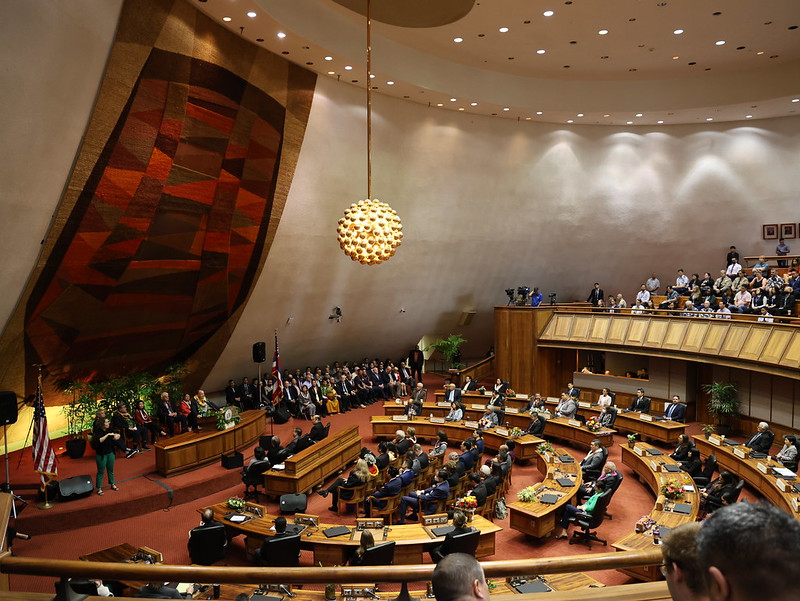 In his second annual State of the State address, Hawaii Governor Josh Green outlined strategies to expedite the wildfire recovery in Maui, address the state’s growing housing crisis, and lower the cost of living.
In his second annual State of the State address, Hawaii Governor Josh Green outlined strategies to expedite the wildfire recovery in Maui, address the state’s growing housing crisis, and lower the cost of living.
The Governor’s “top statewide priority,” he said, is infrastructure and housing. His supplemental budget requests a total of $373 million to this end. An additional $33 million was proposed for the construction of as many as 20 new kauhale communities across the state, to reduce homelessness by 50% by 2026.
He also proposed the “House Hawai‘i’s ‘Ohana” plan, which would provide exemptions from capital gains, conveyance, and general excise taxes to owners of short-term rentals who sell to a local resident, or who convert a home to a long-term rental for a local resident.
To further reduce the cost of living, Governor Green proposed a child and dependent tax credit totaling up to $87 million annually for Hawai‘i families as well as an index of the state’s tax code to provide all taxpayers relief from inflation.
Another key point emphasis this year, Governor Green said, is addressing the state’s shortage of mental health and addiction treatment professionals and ensure that rural and under-served communities across the state have access to the healthcare providers.
Finally, Governor Green encouraged the legislature to approved $125 million to support Hawaiʻi’s public schools, including substantial funding for the Department of Education’s food service and student transportation programs.
Read a full transcript of Governor Green's 2024 State of the State address here.
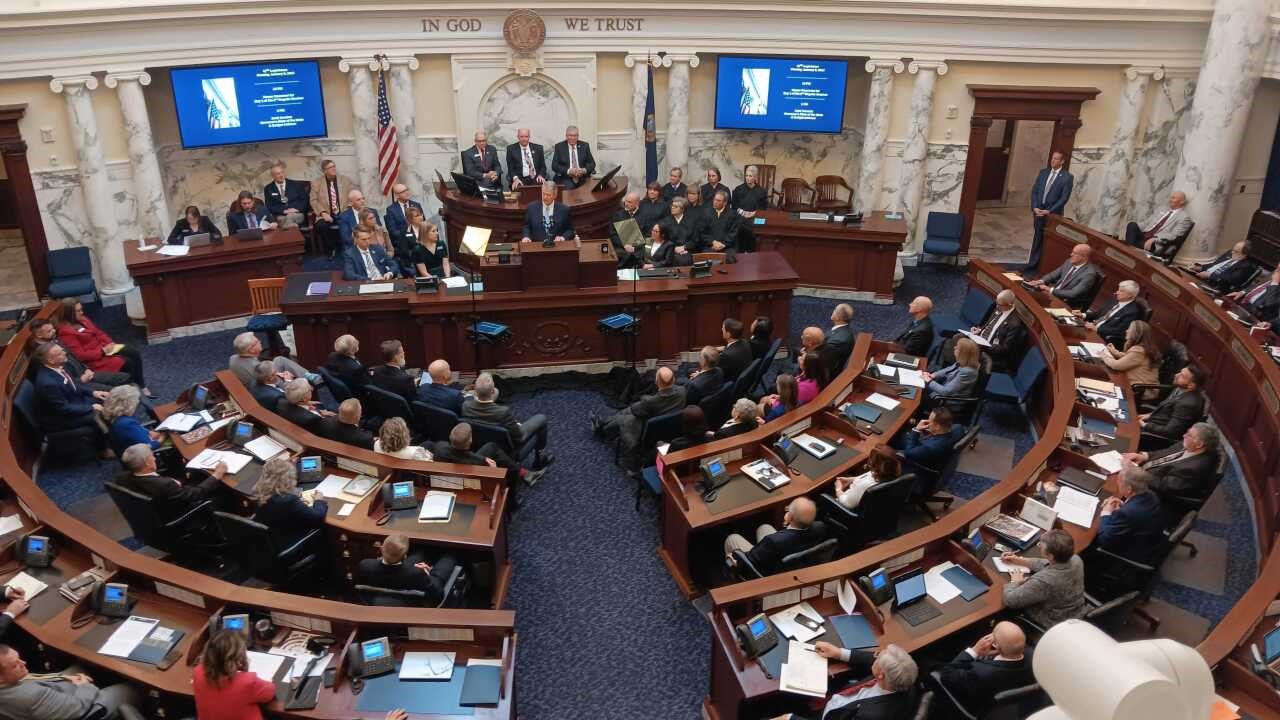 Idaho Governor Brad Little’s 2024 State of the State address focused on his IDAHO WORKS plan, which seeks to continue to build upon the economic success of the state in recent years by investing in the state’s critical infrastructure.
Idaho Governor Brad Little’s 2024 State of the State address focused on his IDAHO WORKS plan, which seeks to continue to build upon the economic success of the state in recent years by investing in the state’s critical infrastructure.
The big-ticket items are a $2 billion investment in school facilities over the next 10 years and $75 million to fund the Idaho LAUNCH program to strengthen the state’s pipeline of skilled workers.
An additional $200 million was proposed for the improvement of dilapidated bridges throughout the state and $50 million to bond for an additional $800 million for other badly needed transportation projects.
Another $30 million was recommended to ensure the state’s water supply and $6.5 million to continue the state’s response to invasive quagga mussels.
Read the full transcript of Governor Little’s 2024 State of the State address here.
Kansas Governor Laura Kelly focused her state of the state address on how the state can support its rural communities. To do so, she outlined several priorities.
In terms of education, the second-term Governor proposed the largest single-year investment ever made in our state’s early childhood system, a large part of which will go toward addressing the state’s childcare shortage. To further streamline early childhood services, she proposed the development of an “Office of Early Childhood” - creating a one-stop-shop for young families, childcare providers, and businesses.
To address the growing cost of living, she proposed completely eliminating state taxes on Social Security increasing the standard deduction and raising the residential statewide property tax exemption from $42,000 to $100,000, which would expand the tax cut to 370,000 Kansas in the Sunflower state.
To end the states “existential” water crisis, Governor Kelly promised to fully fund the State Water Plan for the third year in a row, providing additional funding for rural towns to update their water systems, as well as to help farmers and ranchers implement water-saving practices. The funding will also provide resources for the new Kansas Water Institute at K-State.
Read the full transcript of Governor Kelly’s 2024 State of the State Adress here.
New Mexico Governor Michelle Lujan Grisham and Utah Governor Spencer Cox were the latest Western Governors to provide State of the State addresses.
During her sixth State of the State address, New Mexico Governor Michelle Lujan Grisham outlined an ambitious legislative agenda that included plans to expand access to affordable housing, address the drought, and grow the state’s economy.
Building off the state’s history of innovation, Governor Lujan Grisham proposed the legislature dedicate 2% (approx. $170 million) of the state’s Severance Tax Permanent Fund to invest in companies developing advanced energy technologies – including hydrogen, geothermal, and next-generation battery storage – as well as establish an advanced manufacturing tax credit.
To help the state’s communities become even more business-friendly, she also encouraged the legislature to approve $100 million for an infrastructure matching fund to help communities access federal grants that require a local match, as well as $55 million to continue expanding a widespread charging infrastructure network for electric vehicles.
She also proposed $250 million in low-interest loans to spur the private sector to build faster, another $250 million for expanding homebuying programs like down payment assistance, and the establishment of a state Office of Housing to streamline the permitting processes.
She also spoke about the need to fund innovative water projects, like her Strategic Water Supply plan, bolster the state’s health care system, and improve education by addressing the state’s literacy rates.
Read the full transcript of Governor Lujan Grisham’s 2024 State of the State address here.
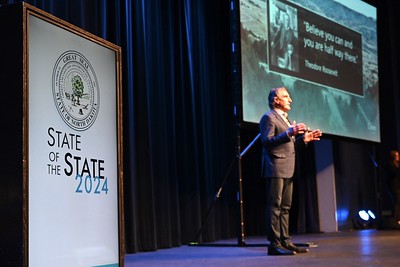 Shortly after announcing that he will not run for a third term as the Governor of North Dakota, Governor Doug Burgum delivered his final State of the State.
Shortly after announcing that he will not run for a third term as the Governor of North Dakota, Governor Doug Burgum delivered his final State of the State.
During his speech, he announced an initiative to develop a comprehensive housing strategy for North Dakota as well as the launch of a new Office of Community Development & Rural Prosperity to empower communities through efficient development, economic growth and enhanced quality of life.
With the state’s reserves exceeding $1.3 billion and general fund revenues already running more than $154 million ahead of the two-year budget cycle, Governor Burgum renewed his call for North Dakota to become the 10th state to eliminate individual state income tax as a way to save taxpayers money and boost workforce recruitment and retention.
Burgum also stressed the need to expand marketing of the 988 Suicide and Crisis hotline, starting immediately with the Governor’s Office website and each cabinet agency displaying the 988 icon with links to resources for anyone in need.
Watch Governor Burgums 2024 State of the State address here.
Oklahoma Governor Kevin Stitt: February 5th
_1.jpeg) South Dakota Governor Kristi Noem's 2024 State of the State address focused on the state’s efforts “to ensure that Freedom Works Here.”
South Dakota Governor Kristi Noem's 2024 State of the State address focused on the state’s efforts “to ensure that Freedom Works Here.”
Along with work to enhance outdoor opportunities and protect the state’s agricultural heritage by restrict foreign adversaries from purchasing ag land in South Dakota, and expanding rehabilitation programs, much of her address focused on workforce development and education.
She encouraged the legislature to increase teacher pay, to provide additional support for the Jobs for America’s Graduates program and to extend tuition for South Dakota National Guardsmen and women to 100% of private colleges in the Mount Rushmore State.
She also detailed a South Dakota Department of Health program that will roll out a $7.5 million grant program to ambulance services and support the implementation of regional hubs and touted the work of the state’s Telemedicine in Motion program to expand telemedicine programs throughout the state.
Read the full transcript of Governor Noem’s 2024 State of the State address here.
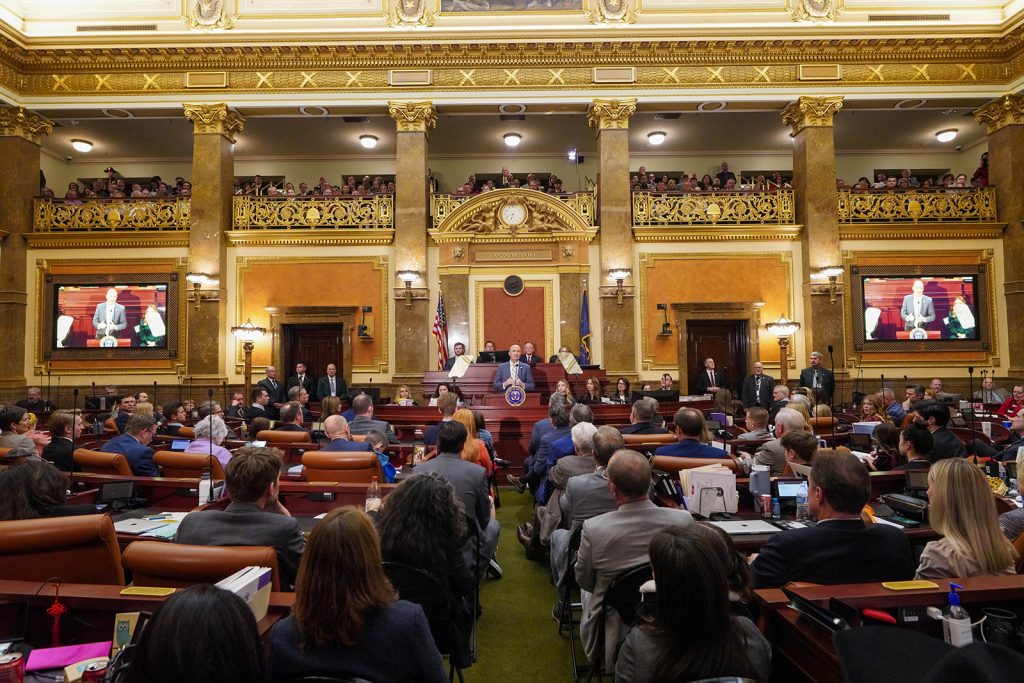 Utah Governor Spencer Cox focused his State of the State address on the Beehive state’s need to address its nation-leading growth “with bold and innovative solutions” that maintain the state’s “weirdness.”
Utah Governor Spencer Cox focused his State of the State address on the Beehive state’s need to address its nation-leading growth “with bold and innovative solutions” that maintain the state’s “weirdness.”
“Utah’s a unique place. It’s very different. Some people like that, some people don’t like it,” he told the Salt Lake Tribune. “So, how do we make sure that with the growth that’s happening, with the changes that are happening, that we’re are hanging on to the best parts of us? Welcoming the people that are coming here, making sure everybody feels welcome and included, and doing that in a way that stays true to the culture of our great state.”
The centerpiece of his budget proposal for the upcoming fiscal year is an “audacious” proposal to build 35,000 new starter homes in the next four years.
“While we need more of everything, my focus is on affordable, attainable, single-family, owner-occupied, detached housing,” he said. “The American dream is alive in Utah, but it will be dead soon if we don’t get this right.”
He also spoke about the need to increase the number of licensed professionals to help those struggling with mental health.
Read the full transcript of Governor Cox’s 2024 State of the State address here.
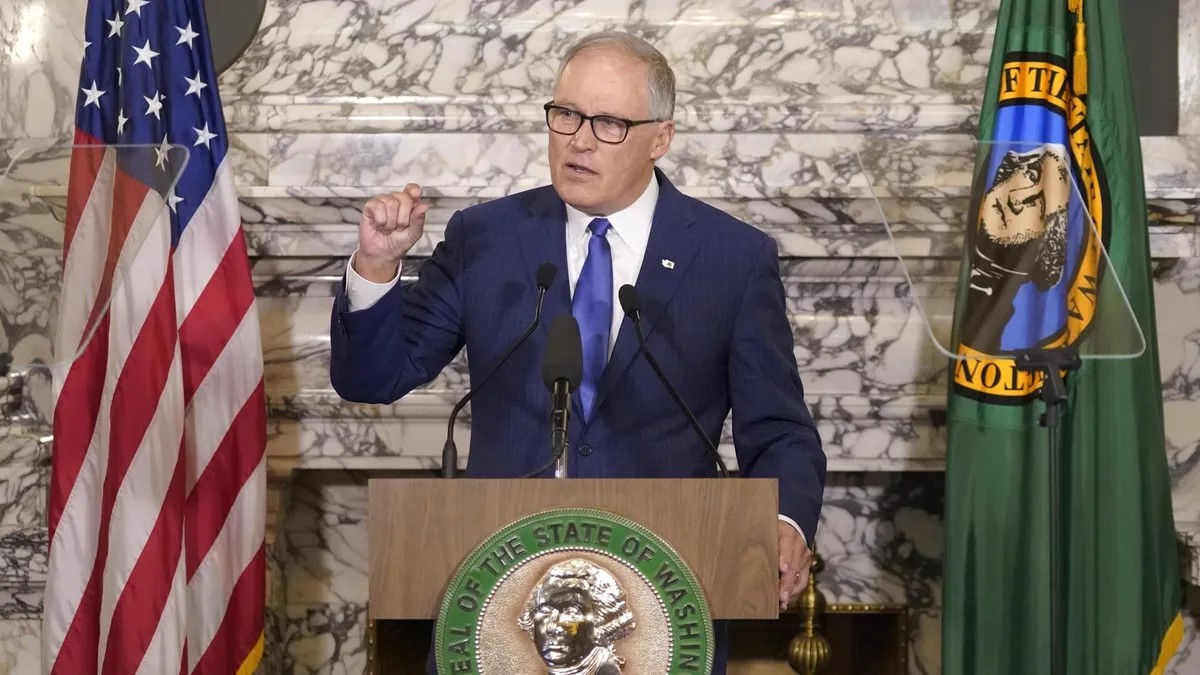 Washington Governor Jay Inslee delivered his 11th State of the State address on January 8 at the state Capitol building in Olympia.
Washington Governor Jay Inslee delivered his 11th State of the State address on January 8 at the state Capitol building in Olympia.
Having proposed a $70.9 billion supplemental budget for 2024, Governor Inslee said the state is primed to invest in big-ticket items such as expanding behavioral health resources, reducing greenhouse gases and supporting clean energy jobs, combating the opioid and fentanyl crisis, investing in housing and homelessness solutions, and supporting school workers.
The Governor proposed increasing the pay for 32,000 paraeducators in the state by $3 per hour, raising the cap on special education funding, and creating incentives for more teachers to serve special needs students.
He also proposed $64 million in new funding to fight against opioids and fentanyl, including investments in education, community health hubs, overdose prevention, treatment access, and recovery supports.
Of course, Governor Inslee also spoke about the state’s efforts to reduce greenhouse gas emissions. Building upon the Climate Commitment Act, which was approved by the legislature in 2023, he proposed a $200 utility bill credit for nearly 2 million low- and moderate-income Washingtonians, as well as an initiative to help thousands more families install energy-efficient heat pumps. In that same vein, he said the state “must do everything possible” to expedite the construction of cleaner, more efficient ferries.
Read the full transcript of Governor Inslee’s 2024 State of the State address here.
Wyoming Governor Mark Gordon: February 12